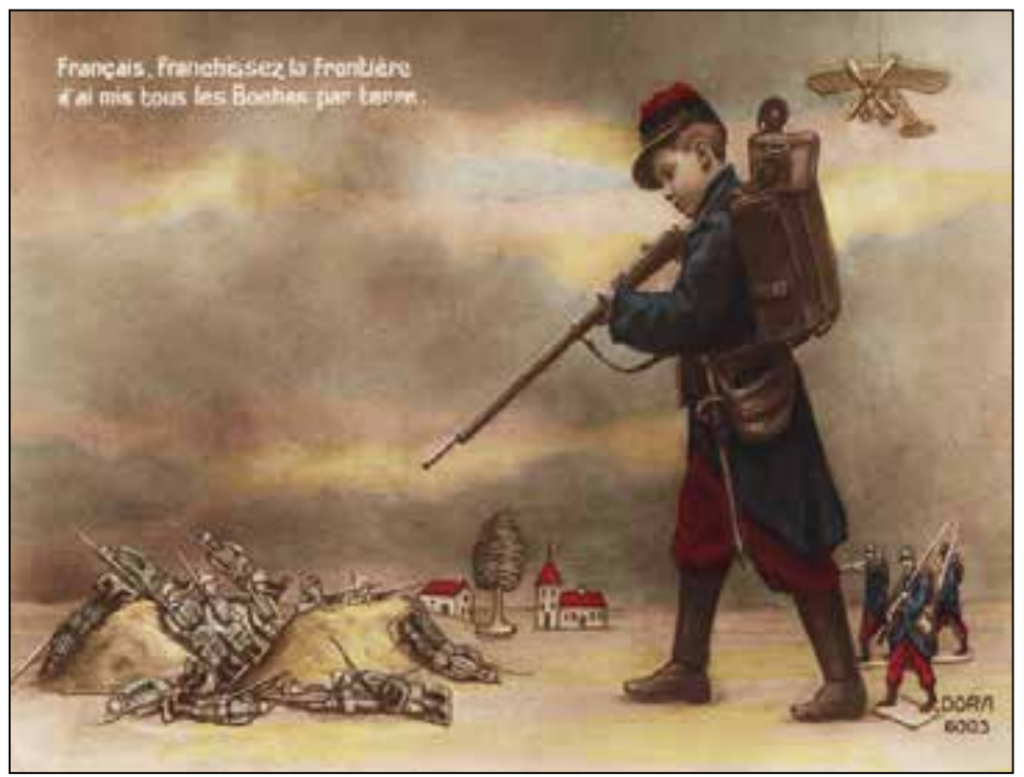THE USE OF THE TOY SOLDIER, THE MILITARY TOY, IN THE CONTEXT OF THE MILITARIZATION OF CHILDHOOD IN THE WESTERN WORLD FROM 1870 TO 1940 – By Nassim Medjaoui

In his book The use of the toy soldier, the military toy, in the context of the militarization of childhood in the Western world from 1870 to 1940 Nassim Medjaoui explores how military toys, in particular toy soldiers, were used to instil militaristic and patriotic values in children in the Western world. Written
in French as part of work on a Thesis. this will hopefully soon be available in English. Nassim is planning to attend the next Toy Soldier show in Chicago when he will be promoting the book.

It fills a significant gap in historical research, as no other historian has previously addressed this topic in depth, rendering this field of research almost virgin. The author underlines the difficulty of this work, particularly due to the lack of written sources on toy brands of the time. Despite this, he has managed to produce a unique work of its kind, saluting the other works of collectors on toy soldiers
who preceded and inspired him, but affirming the original nature of his scientific approach. Enriched with various images, this book does not present them in the manner of a catalogue. Rather they are carefully chosen, and in relation to the text, they are used as tools to explain, accompany and illustrate the author’s approach.
The book analyses the socio-political contexts of the periods by recalling the historical events, contexts and main ideological movements that influenced the production and popularity of military toys. However, our readers should be reassured by remembering that the toy soldier and military toys more generally still remain the central theme of this study.
By addressing very current issues in the introduction and opening, such as the return of the war in Ukraine, it also demonstrates the current potential of this subject within the framework of historical research. This work offers a unique perspective on the cultural history of children and their upbringing, highlighting the significant medium- and long-term implications of the militarization of childhood.
It is therefore essential reading for collectors, historians, sociologists, all education community, and all those interested in the impact of toys on the development of children and on society. This work is a milestone in a larger project of global study of the use of military toys that he will pursue as a thesis at the Sorbonne. 245 pages, 57,841 words, 84 illustrations.


Short biography of the author: Nassim Medjaoui was born in 2000 in France, in the Paris suburbs where
he still lives, he has always been passionate about history and writing.

From 2012, wanting to have physical representations of what he read in books, he started collecting toy and model soldiers, painting them and restoring them. He started with models, little plastic soldiers from the Starlux brand. Then thanks to advice and encouragement from other French and foreign collectors and toys soldiers show dealers he became passionate about old toys soldiers in solid lead, hollow lead, aluminium and composition. Currently he has a large collection of 7,000 pieces. The major
French manufacturers Quiralu, L.R, Lucotte, CBG, G.M are all represented but also many old foreign
manufacturers like Lineol, Elastolin, Manoil as well as modern ones like King and Country. Nassim
found in toy soldiers a part of his family history, being of Maghreb origin he has always been sensitive
to colourful colours, movements, local markets, traditional outfits, the shadows of traditional riders. He
found them in the figures made by manufacturers such as G.M and Heyde, enabling him to recreate
images from his childhood. This passion followed Nassim in his studies. He obtained a master’s degree in history at the Sorbonne. Encouraged by his teachers, as part of the wave of cultural studies, he
has defended a thesis on the use of toy soldiers and other military toys for propaganda purposes.
